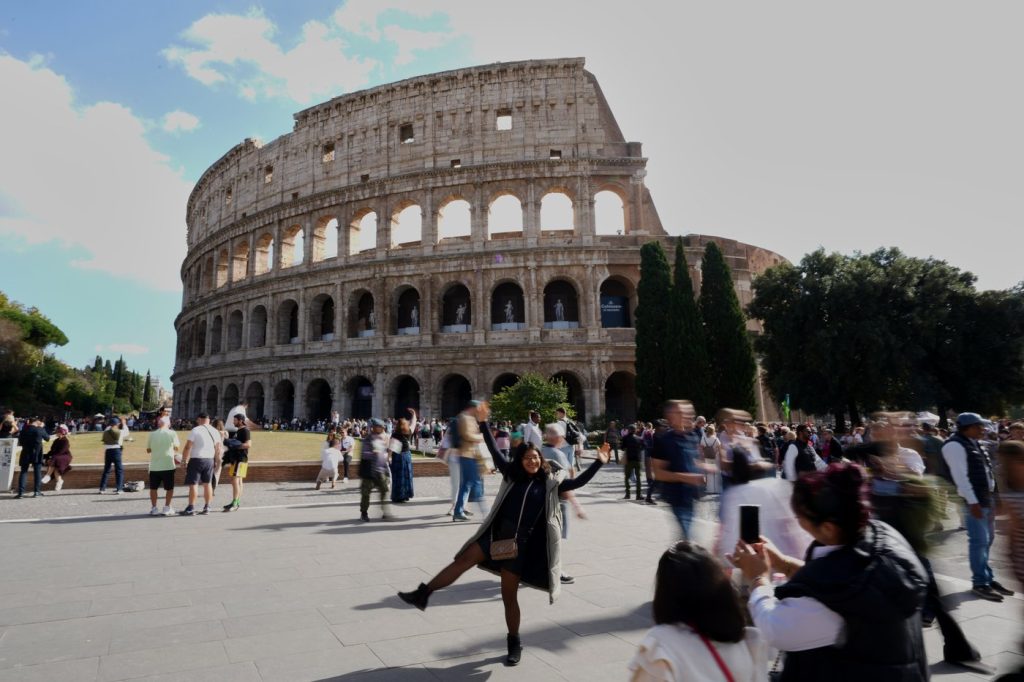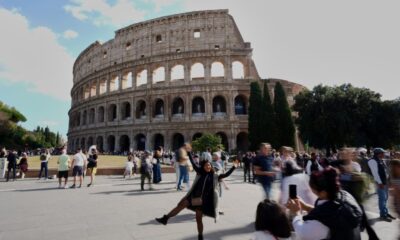Top Stories
Colosseum Director Bans Raves, Plans Cultural Concerts Instead

UPDATE: The newly appointed director of the Colosseum, Simone Quilici, has emphatically ruled out hosting electronic dance music raves at the iconic Roman amphitheater, clarifying plans for more culturally enriching events. In a recent interview, Quilici responded to widespread social media speculation about “massive raves” potentially coming to the nearly 2,000-year-old site, stating that concerts must respect the Colosseum’s historical significance.
Quilici, who officially took charge on October 20, 2023, expressed his commitment to preserving the Colosseum as a “sacred space” integral to Roman identity. Critics, including archaeologists and concerned locals, had voiced worries that loud electronic music could damage the ancient structure. “The music must be carefully controlled,” he told The Associated Press, emphasizing a preference for subdued genres. He cited Sting as a potential performer, indicating that concerts could lean towards acoustic or jazz rather than high-energy rock.
The Colosseum has a history of hosting limited concerts, with notable performances by Ray Charles in 2002 and Paul McCartney in 2003. However, these events were rare and tightly controlled, and Quilici aims to introduce more artistic presentations, including poetry readings and historical reenactments of gladiatorial battles, by expanding the venue’s existing small stage.
Plans are also underway to enhance visitor experiences beyond the Colosseum itself. Last year, the iconic site saw nearly 9 million visitors, an increase from 7 million the previous year, partly driven by the ongoing Vatican Jubilee year. Despite the influx, Quilici noted that many tourists only visit the Colosseum, missing out on the nearby Roman Forum and Palatine Hill, which are included in a 24-hour ticket option.
Quilici aims to encourage tourists to explore these adjacent sites, describing the Colosseum as a launching point for broader cultural experiences in Rome. “It’s an opportunity to use the Colosseum as a starting point for exploring less-visited places,” he stated, highlighting the need for better management of tourist flows to prevent overcrowding at key attractions.
As part of his vision, Quilici seeks to eliminate chaotic scenes created by costumed centurions soliciting tips from visitors. He advocates for presentations that reflect accurate historical knowledge and research, contrasting sharply with the current tourist experience.
Looking ahead, the first concerts and performances at the Colosseum are projected to begin within the next two years, marking a significant shift in how this historic venue engages with the public. “Bringing cultural activities into the mix would enrich this place, making it not only a site to visit but also a place to experience and enjoy artistic events,” Quilici concluded.
With plans still in their early stages, all eyes are on the Colosseum as it prepares for a new era of cultural programming. As discussions continue, the Colosseum remains a focal point for both tourists and locals alike, emphasizing the need for balance between preservation and cultural expression.
-

 World3 months ago
World3 months agoScientists Unearth Ancient Antarctic Ice to Unlock Climate Secrets
-

 Entertainment3 months ago
Entertainment3 months agoTrump and McCormick to Announce $70 Billion Energy Investments
-

 Lifestyle3 months ago
Lifestyle3 months agoTransLink Launches Food Truck Program to Boost Revenue in Vancouver
-

 Science3 months ago
Science3 months agoFour Astronauts Return to Earth After International Space Station Mission
-

 Technology2 months ago
Technology2 months agoApple Notes Enhances Functionality with Markdown Support in macOS 26
-

 Top Stories2 weeks ago
Top Stories2 weeks agoUrgent Update: Fatal Crash on Highway 99 Claims Life of Pitt Meadows Man
-

 Sports3 months ago
Sports3 months agoSearch Underway for Missing Hunter Amid Hokkaido Bear Emergency
-

 Politics3 months ago
Politics3 months agoUkrainian Tennis Star Elina Svitolina Faces Death Threats Online
-

 Technology3 months ago
Technology3 months agoFrosthaven Launches Early Access on July 31, 2025
-

 Politics3 months ago
Politics3 months agoCarney Engages First Nations Leaders at Development Law Summit
-

 Entertainment3 months ago
Entertainment3 months agoCalgary Theatre Troupe Revives Magic at Winnipeg Fringe Festival
-

 Politics2 weeks ago
Politics2 weeks agoShutdown Reflects Democratic Struggles Amid Economic Concerns





















